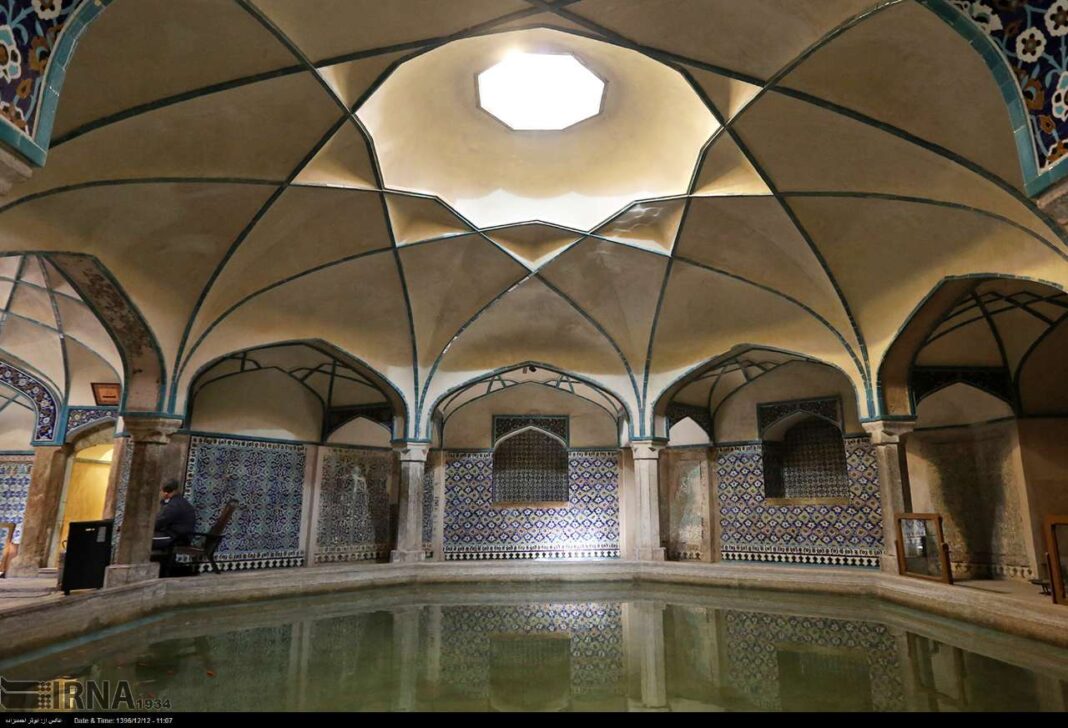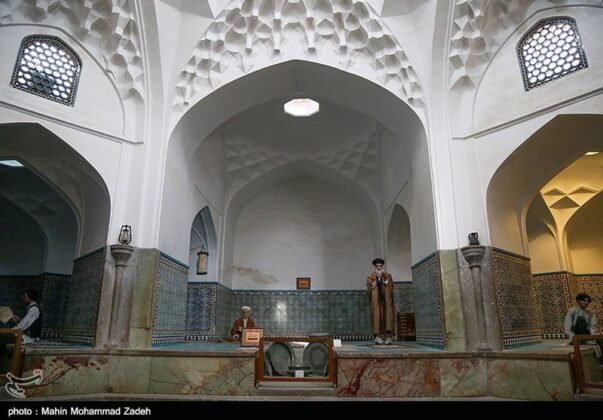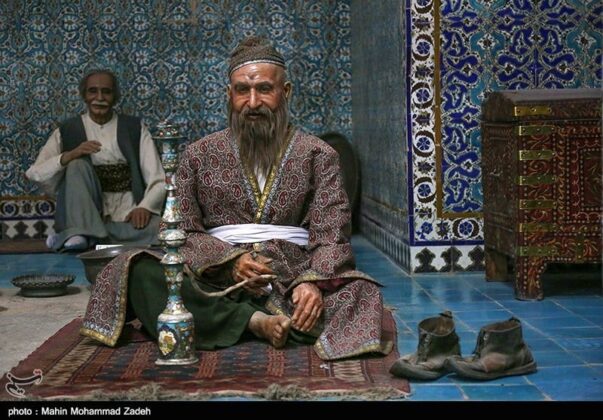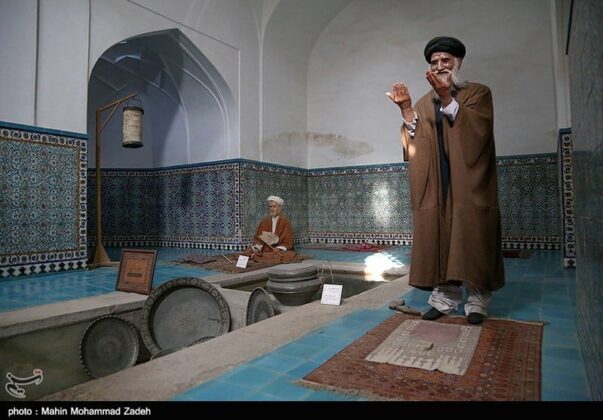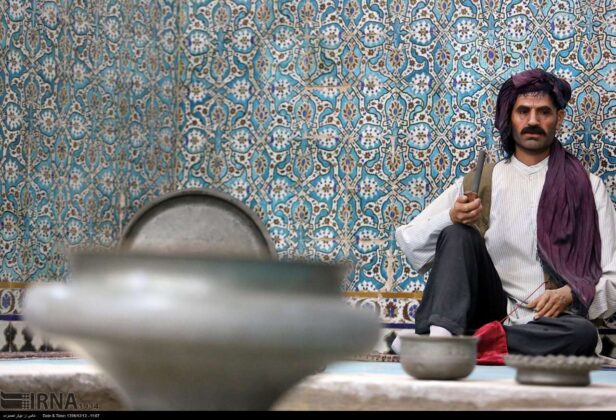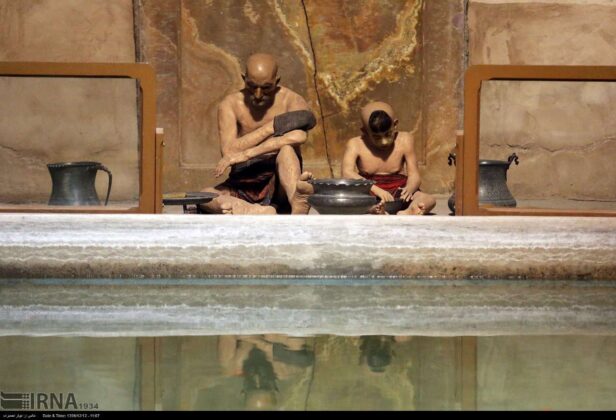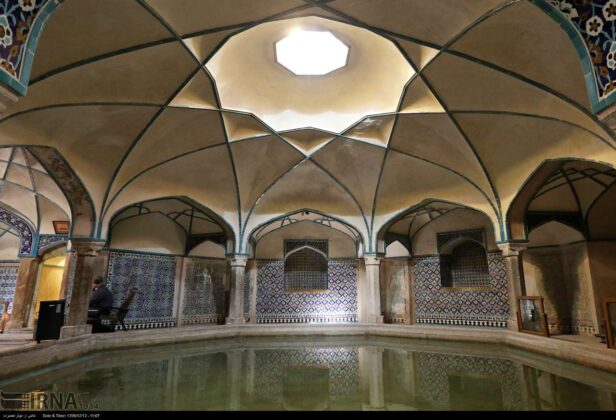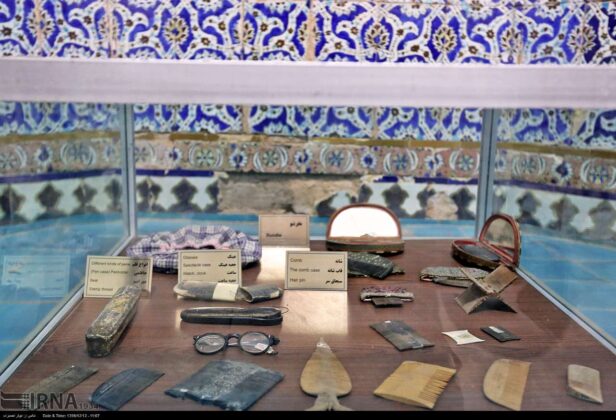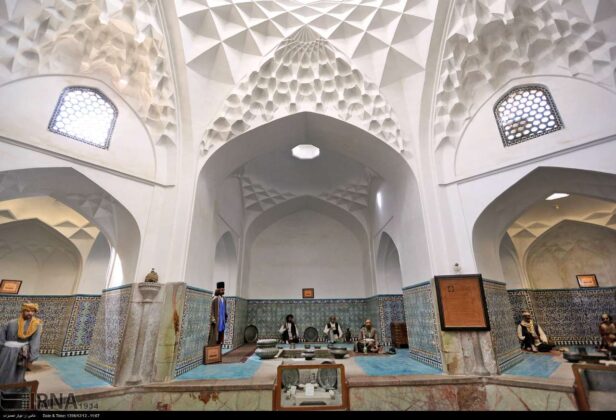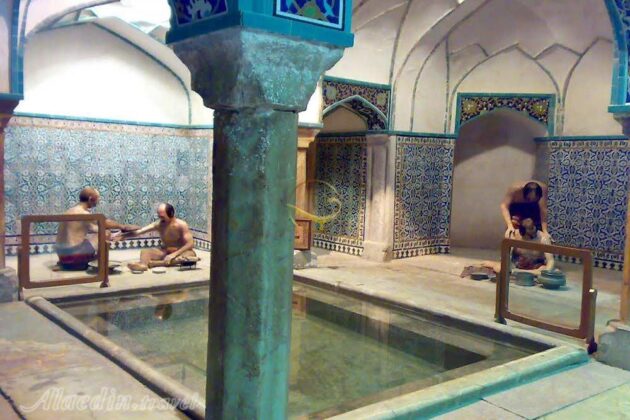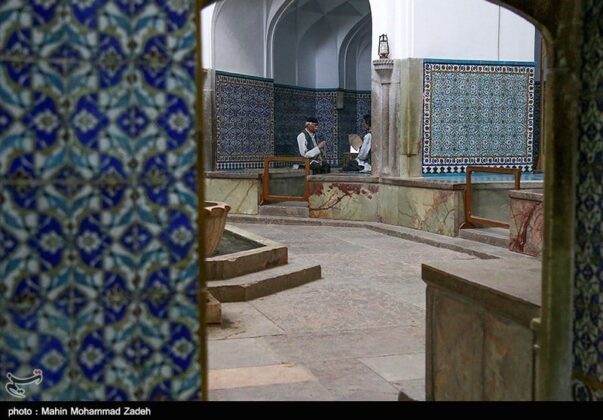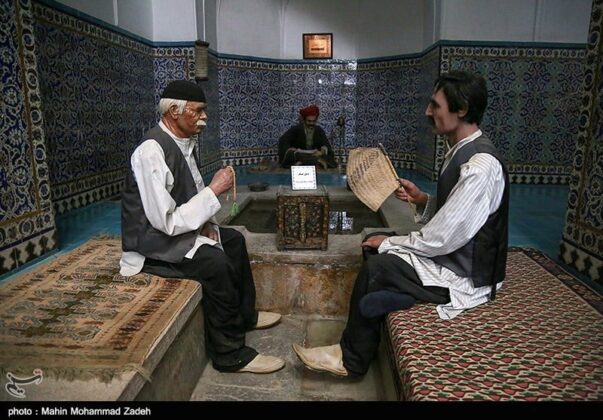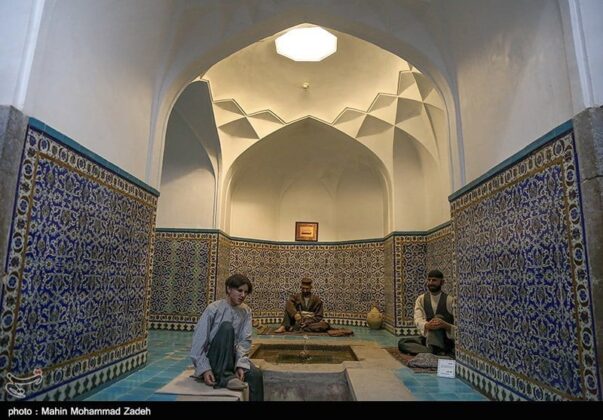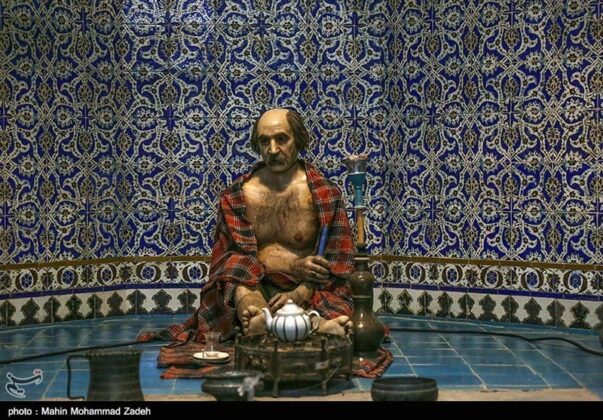The Ganjali Khan Complex is a Safavid-era building complex, located in the old centre of Kerman. The complex is composed of a school, a square, a caravanserai, a bathhouse, an Ab Anbar (water reservoir), a mint, a mosque and a bazaar.
The Complex- and bathhouse- was built by Ganjali Khan who governed Kerman, Sistan and Kandahar provinces. Its construction lasted from 1596 to 1621, under Safavid Shah Abbas I. The architect of the complex was Mohammad Soltani from the city of Yazd.
Built in 1631, the Ganjali bathhouse is located on the southern side of Ganjali Square. The entrance of the building is painted with ornaments of the Safavid era. An interesting feature of the bathhouse’s architectural finish is that the sculptured stones of the ceiling are matched with those of the flooring.
This Persian bath is composed of a disrobing room, cold room and hot room, all covered with domes carried on squinches. The Ganjali Baths are unique works of architecture decorated with exquisite tile works, paintings, stuccos, and arches. The bathhouse was converted into an anthropological museum in 1971.
What follows are the photos of the complex and Persian bath retrieved from IRNA and Tasnim:
